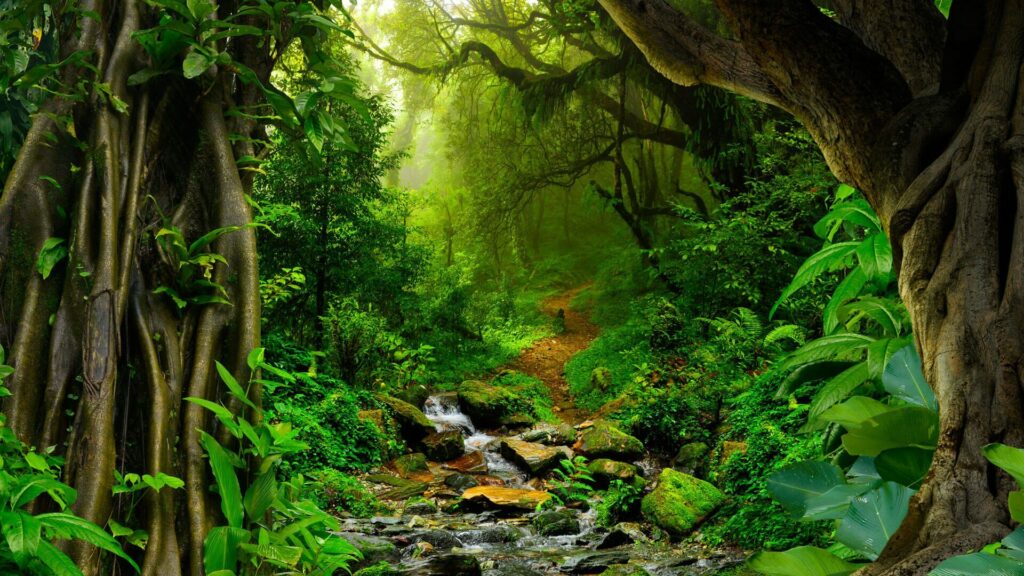Exploring the Enchanting Amazon Rainforest: Brazil’s Natural Wonder and Ecological Treasure
John May 8, 2024 0
Introduction: The Amazon Rainforest, often referred to as the “Lungs of the Earth,” is a vast and biodiverse ecosystem that spans nine countries in South America, with the majority located in Brazil. Covering over 5.5 million square kilometers (2.1 million square miles), the Amazon Rainforest is the largest tropical rainforest in the world and is home to an astonishing array of plant and animal species, as well as indigenous communities with rich cultural heritage. In this comprehensive article, we will embark on a journey to explore the enchanting Amazon Rainforest, delving into its biodiversity, ecological significance, cultural importance, and the unique experiences it offers to visitors seeking adventure and discovery.
A Biodiversity Hotspot: The Amazon Rainforest is renowned for its unparalleled biodiversity, harboring an estimated 10% of the world’s known species. From towering canopy trees and exotic flowers to elusive jaguars and vibrant macaws, the Amazon is teeming with life at every turn. The rainforest is home to an estimated 390 billion individual trees belonging to approximately 16,000 species, making it one of the most biologically diverse ecosystems on the planet. In addition to its flora, the Amazon supports an incredible array of fauna, including over 1,300 species of birds, 430 species of mammals, and 2.5 million species of insects. It is also home to thousands of species of fish, amphibians, and reptiles, many of which are found nowhere else on Earth.
Ecological Significance: The Amazon Rainforest plays a critical role in regulating the Earth’s climate and maintaining global biodiversity. Its dense vegetation acts as a carbon sink, absorbing and storing vast amounts of carbon dioxide from the atmosphere, which helps mitigate climate change and stabilize the planet’s climate system. The rainforest also plays a vital role in regulating regional weather patterns, producing approximately half of its own rainfall through a process known as transpiration. Additionally, the Amazon River, which flows through the heart of the rainforest, is the largest river by discharge volume in the world and provides essential freshwater resources for millions of people and countless species of plants and animals.
Cultural Importance: The Amazon Rainforest is not only a biological treasure but also a cultural and spiritual homeland for numerous indigenous peoples who have inhabited the region for thousands of years. These indigenous communities have developed deep connections to the land, relying on the forest for sustenance, shelter, and spiritual fulfillment. They possess traditional knowledge and practices that have sustained them for generations, serving as stewards of the rainforest and guardians of its biodiversity. However, these communities face numerous threats, including deforestation, land encroachment, and resource exploitation, which jeopardize their way of life and the future of the Amazon Rainforest itself.
Threats and Conservation Efforts: Despite its ecological and cultural significance, the Amazon Rainforest is facing unprecedented threats from deforestation, habitat destruction, and climate change. Large-scale agriculture, logging, mining, and infrastructure development are driving rapid rates of deforestation, leading to the loss of valuable habitat and biodiversity. Additionally, climate change is exacerbating the impacts of droughts, wildfires, and extreme weather events, further destabilizing the fragile ecosystems of the Amazon. In response to these threats, numerous conservation organizations, governments, and indigenous groups are working tirelessly to protect and preserve the Amazon Rainforest through initiatives such as protected areas, sustainable land management practices, and community-based conservation projects. These efforts aim to ensure the long-term viability of the rainforest and its invaluable contributions to the health and well-being of the planet.
Visiting the Amazon: For visitors seeking to experience the wonders of the Amazon Rainforest firsthand, there are countless opportunities for exploration and adventure. Eco-tourism lodges and guided tours offer immersive experiences that allow travelers to discover the rainforest’s diverse ecosystems, observe wildlife in its natural habitat, and learn about indigenous cultures and traditional practices. Activities such as hiking, canoeing, birdwatching, and wildlife spotting provide opportunities for close encounters with the incredible biodiversity of the Amazon, while educational programs and workshops offer insights into the rainforest’s ecological importance and conservation challenges. Whether exploring the dense jungles of the Amazon Basin, cruising along the meandering waterways of the Amazon River, or staying with indigenous communities in remote villages, a journey to the Amazon Rainforest is sure to leave a lasting impression and instill a deep appreciation for this extraordinary natural treasure.
Conclusion: The Amazon Rainforest is a place of wonder, beauty, and ecological significance that captivates the hearts and imaginations of people around the world. From its vast expanse of lush greenery and towering trees to its diverse array of wildlife and indigenous cultures, the Amazon is a living testament to the power and resilience of nature. As stewards of the planet, it is our collective responsibility to protect and preserve the Amazon Rainforest for future generations, ensuring that its invaluable biodiversity, cultural heritage, and ecological services endure for centuries to come. By supporting conservation efforts, promoting sustainable development, and raising awareness about the importance of the Amazon, we can work together to safeguard this irreplaceable natural treasure and ensure a sustainable future for all life on Earth.




